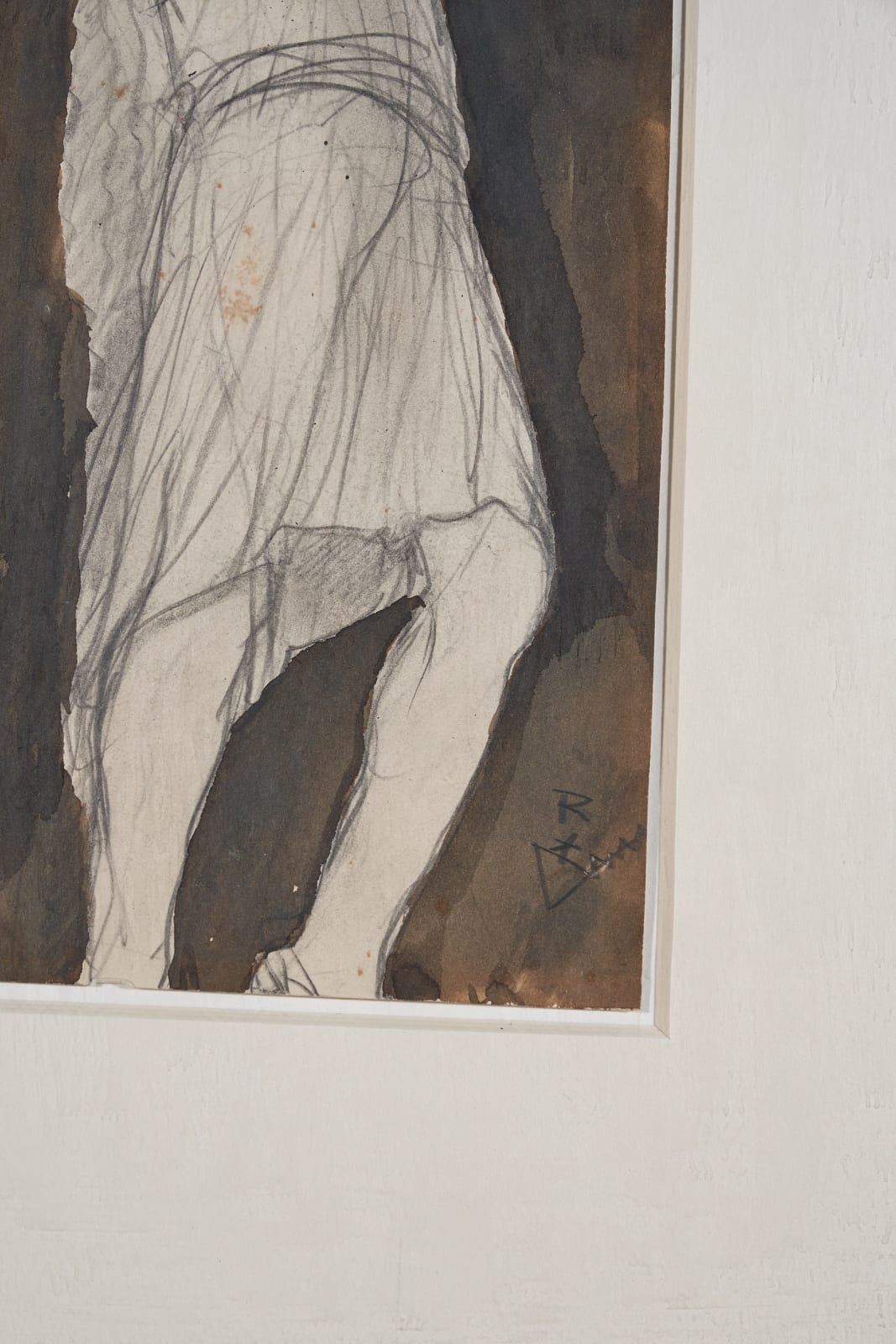Victor Rousseau
Further images
Victor Rousseau (Belgian, 1865 - 1954) was a sculptor of figures, busts and monuments. He was also a painter and draughtsman.
Music ( his first love ), dance and the female nude were his main sources of inspiration. His work stands out for its supple and harmonious forms, intimate touch, tranquillity and purity of expression. Animals are rather an exception in his oeuvre. From 1935, he traded the rather swinging and flowing style for a more naturalistic style. He sculpted his models in various materials: terracotta, plaster, marble, bronze and ivory.
When he started as a porter in Féluy in 1875, no one could have guessed that he would become one of the most important sculptors of the 20th century in Belgium. Together with his father and uncle, he worked for seven years as a stonemason at the Courthouse in Brussels (1876-1883) under the guidance of French sculptor Georges Houtstont (1832-1912), who became his teacher at the Academy in Saint-Josse-ten-Noode. From 1897 to 1881 and from 1888 to 1889, he took evening courses with Charles Van Der Stappen (1843-1910) at the Academy in Brussels.
Winning the "Prix Godecharle" in 1890 enabled him to take study trips to France, Italy and England. After finishing second in the "Prix de Rome" in 1894, he went to Italy. In 1900, he installed his studio in Vorst (Brussels). In 1911, he won the "Grand Prix de Sculpture" in Rome. In 1933, he won the "Prix Quinquennal du Hainaut."
He became professor at the Academy in Brussels (1905), where he succeeded Charles Van Der Stappen (1910) and later became director (1919-1922). In 1909, he became a member and director of the Académie Royale des Beaux-Arts (Royal Academy of Fine Arts).
He stayed in England during World War I, where his work “Gedenkteken in Dankbaarheid” ("Belgian Memorial in Gratitude") to Britain was unveiled in 1920. Several other official commissions would follow, including monuments and busts. Two bronze lamp posts decorated with an owl and a parrot for the Botanical Gardens in Brussels illustrate the originality of this sensitive Art Nouveau artist.
He participated at the exhibitions Pour l'Art, La Libre Esthétique and the Galerie Giroux in Brussels; at the Salon Contemporain and the Salon Triennal (1923) in Antwerp; at the Salon d'Automne and the Exposition Universelle (1900) in Paris; at the summer events of the Royal Academy of Arts (1917 and 1918) and at the Venice Biennale (1912, 1920 and 1922).
A retrospective exhibition of his oeuvre was held at Brussels' Palais des Beaux-Arts in 1933.
He had excellent contacts within the world of literature and music. He became co-founder of the art society Kunst van Heden (1905). Being a member of the Académie Royale des Beaux-Arts, Grand-officier de l’ordre de Léopold, Officier de la Légion d’Honneur, he obtained several European distinctions. In 1931 he refused the honourable title of Baron.
Literature
De Gulden Roos, p. 296-297; Vanden Eeckhoudt, D. (2003), Victor Rousseau, Brussels: Éditions Bern’Art; 150 Jaar Monumentale Animaliersculptuur – ZOO Antwerpen 3 juli – 12 september 1993 (1993) (exh. cat.), Antwerp: Esco, p. 93-94, 167.; E. Bénézit; Engelen-Marx; Pas, W. & G. Pas - Arto 2000





